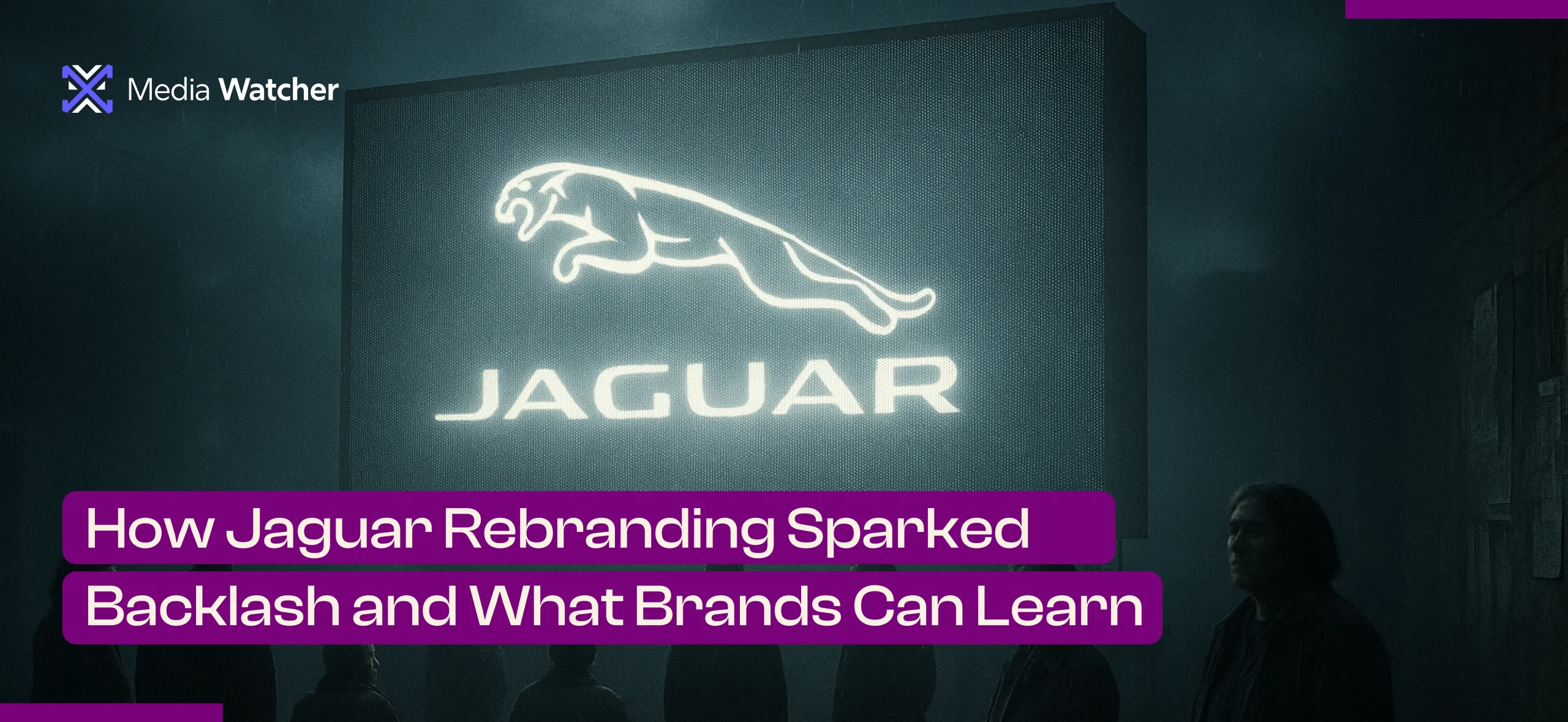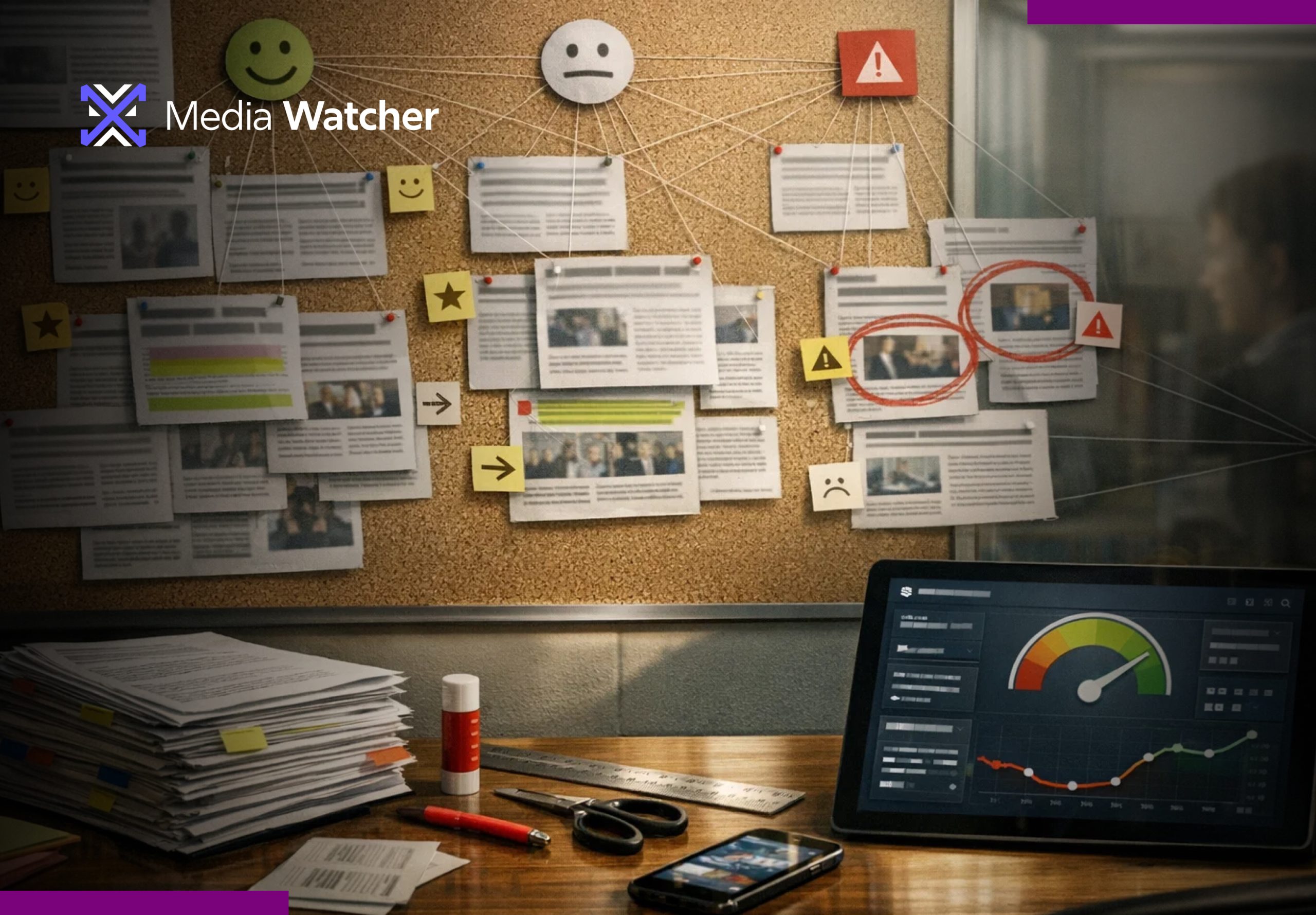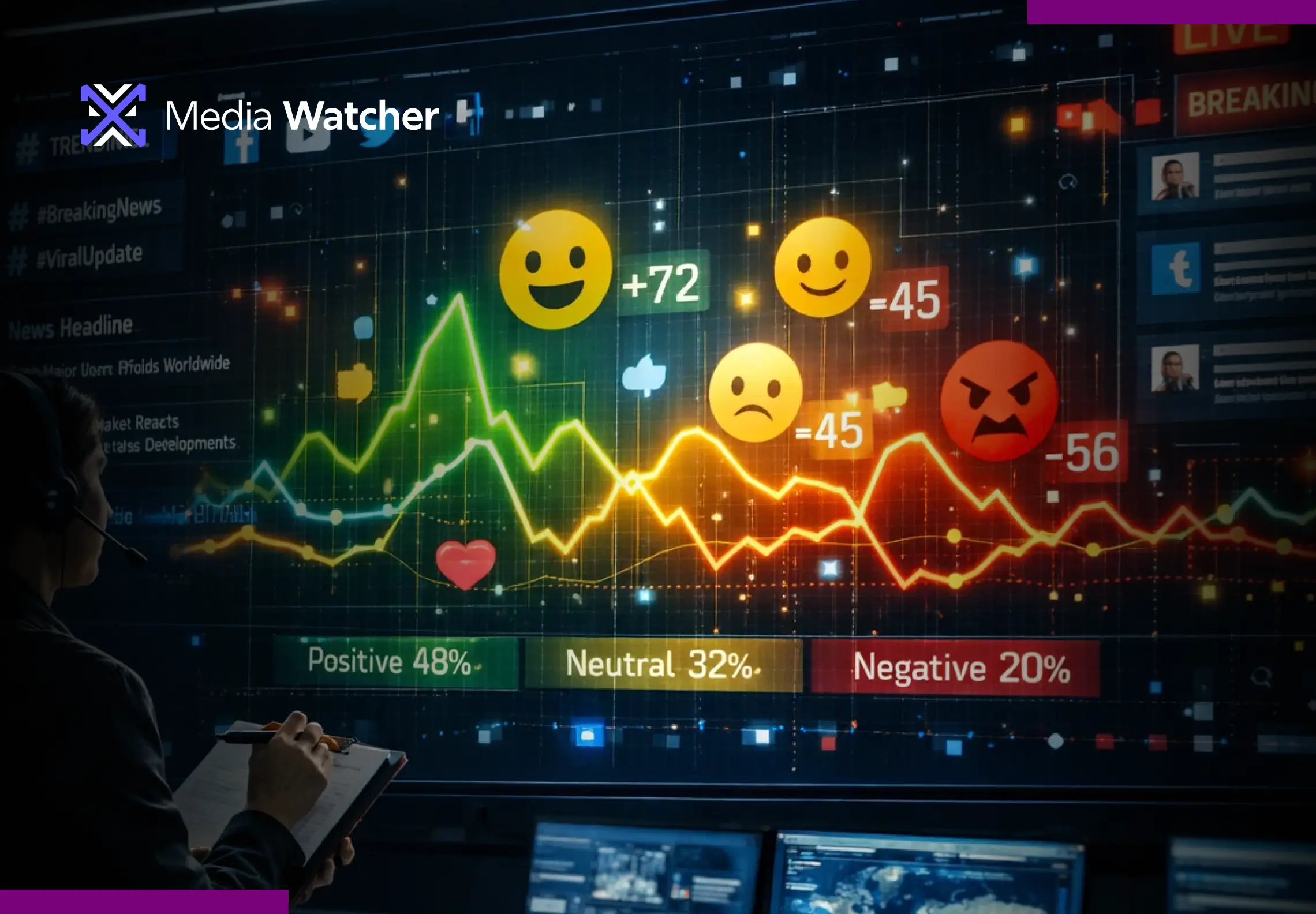What happens when a luxury brand trades in its luxurious identity for a futuristic glow-up?
Jaguar, the British luxury automobile company known for its leaping cat logo, rebranded itself as a next-generation electric automobile company in late 2024. But why did Jaguar rebrand in the first place?
The company aimed to reposition itself as a brand competing with the likes of Tesla and Bentley. For this purpose, it developed a bold campaign that signaled full electrification by 2026. The campaign featured avant-garde messaging and minimalist visuals that differed significantly from its primary branding strategy.
Instead of applause, the Jaguar rebranding was ultimately met with backlash, mockery, and confusion. As a result, the brand’s European sales collapsed significantly in 2025. This is more than just a brand catastrophe; it’s a powerful message about what can happen when a brand fails to track public sentiment and industry perception before campaign development.
It raises the following question: “Could better media intelligence have prevented the Jaguar sales crash?”
Breaking Down the Key Changes in Jaguar Cars Rebranding
Rebranding is not just about changing the logo, but it’s about reshaping the strategy to attract a global audience. For this particular reason, social media platforms like Reddit, Facebook, TikTok, and YouTube act as instant focus groups of users’ expectations.
But, Jaguar cars rebrand strategy wasn’t backed by the tested emotional temperature of its audience. Here’s a breakdown of the key changes that accompanied the Jaguar re-brand decision and why it generated such a strong online reaction:
A New Visual Identity Approach
The company replaced the iconic “Growler” and “Leaper” with a minimalistic wordmark, “JaGUar.” The logo that once echoed strength and speed was rebranded into a sterile font work that was reminiscent of fashion houses.
The Jaguar logo change was followed by alterations in the brand’s color palette, which seemed to majorly target a young and design-conscious audience. The customers mourned this drastic identity transformation on Twitter (X), which generated a highly negative sentiment, as they expressed confusion about the new branding. This is evident from the comments on Twitter, and one of them is shown below:
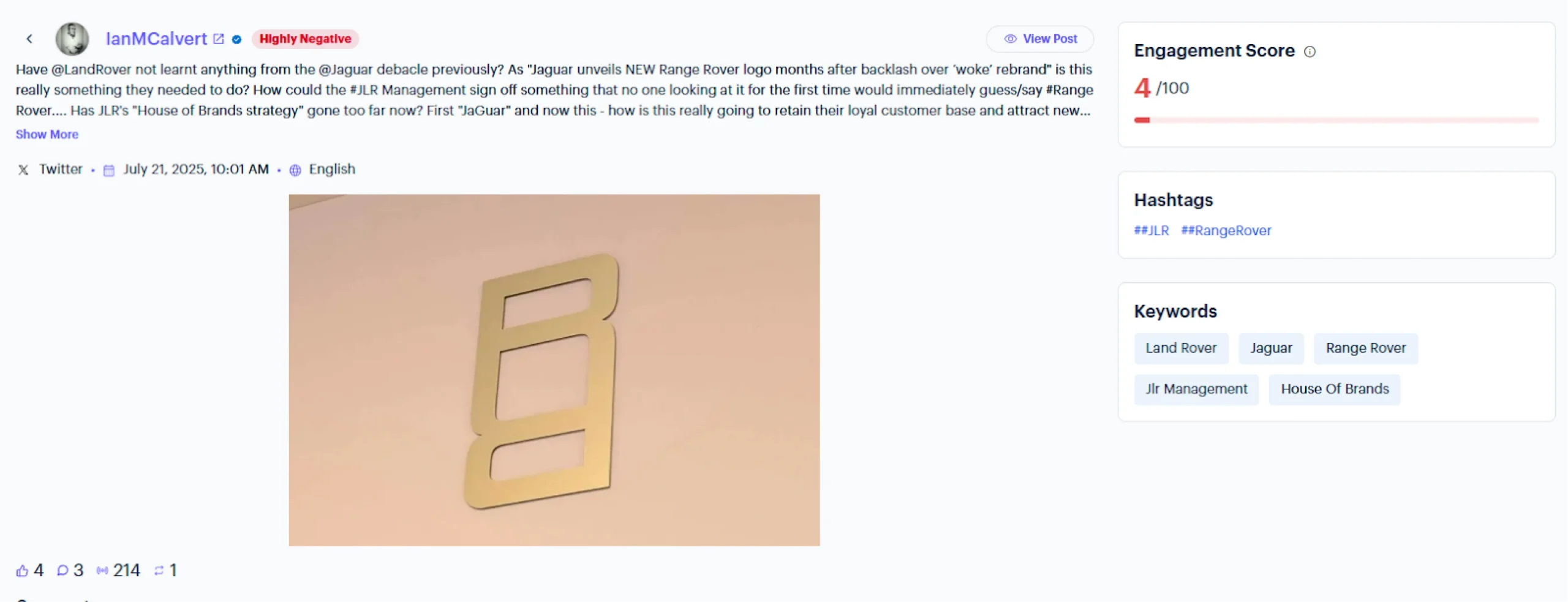
Brand Messaging Drift
Jaguar rebrand not only revolved around the logo, but it also changed the core slogans. The new taglines, “Copy Nothing,” “Live Vivid,” and “Delete Ordinary,” reflected a shift in the brand’s core messaging.
Critics on TikTok noted that while the slogans were bold, they severely lacked the brand’s association with their core offerings, the cars.
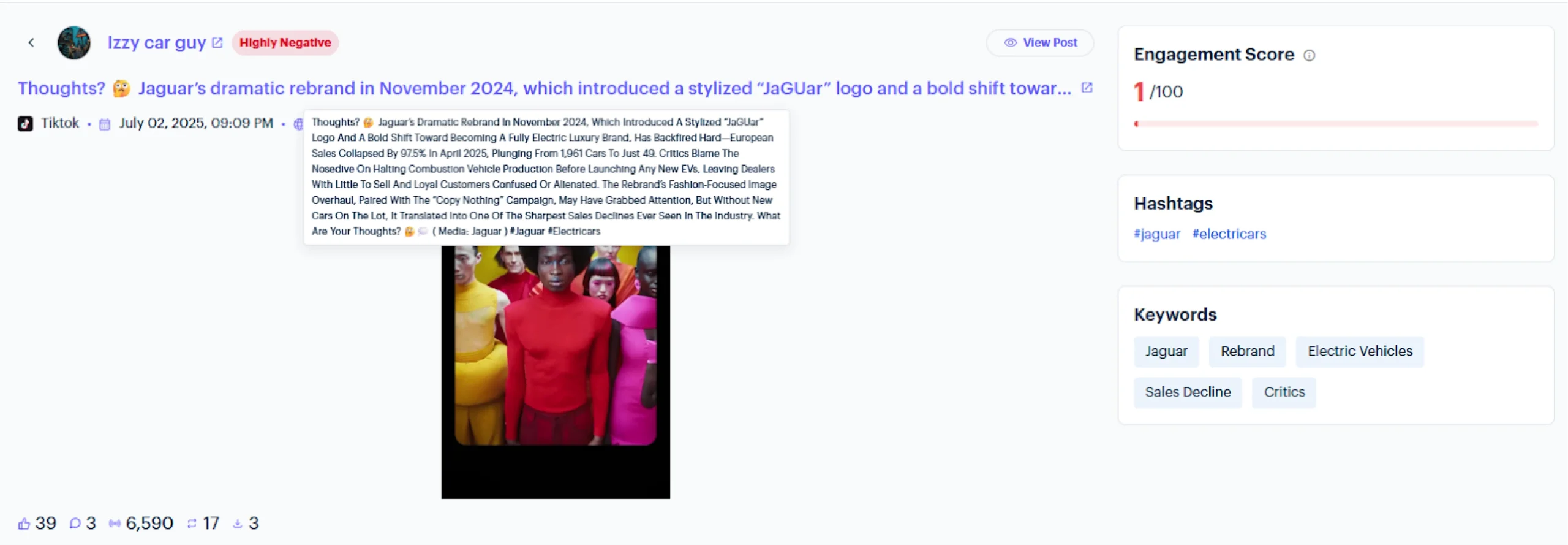
Non-Aligned Campaign Execution
Instead of the predicted automobile engines, the viewers were met with artful sets and androgynous models, which seemed totally irrelevant to what the brand was trying to sell. Some influential people, including Elon Musk, even posted, “Do you even sell cars anymore?” Others called it the brand’s worst decision they had ever made.
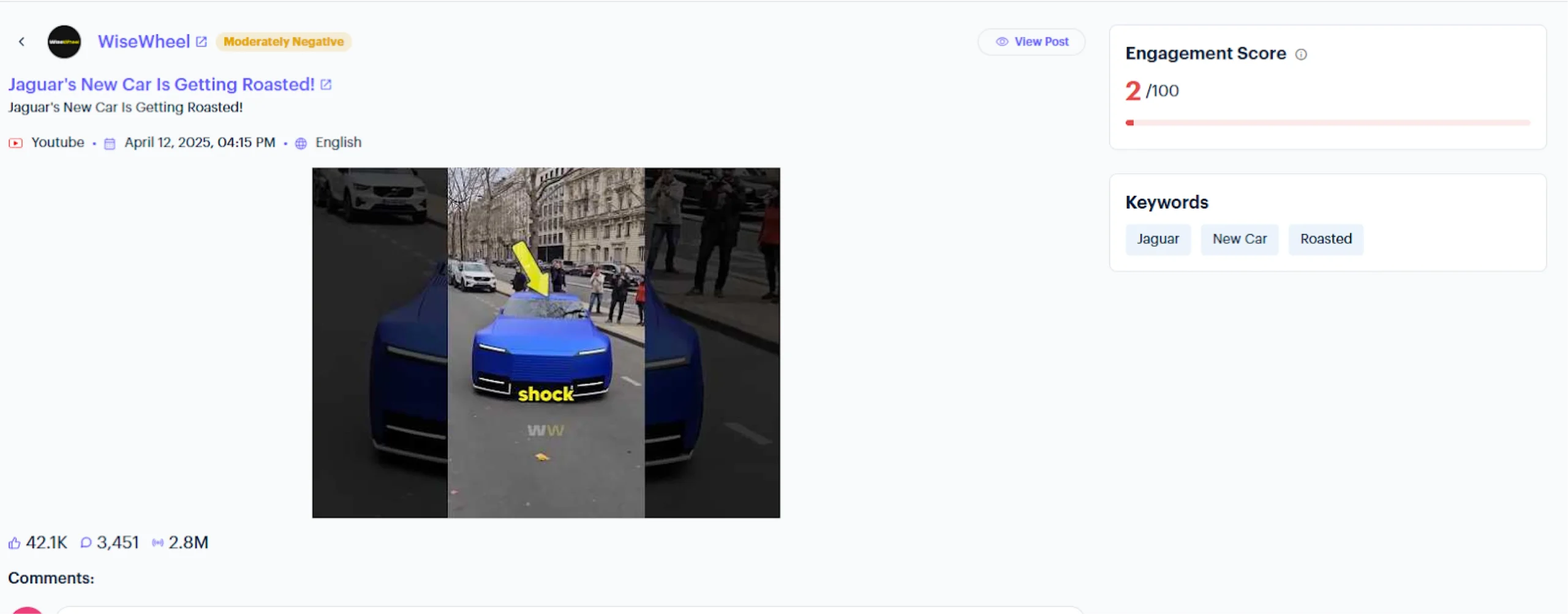
Media and Public Response to Jaguar Rebrand Failure
The reason why Jaguar re-brand failed was that it disconnected emotion from identity and didn’t resonate properly with the audience’s expectations. During drastic organizational shifts like this, the initial public and media reactions often become the driving force behind sales.
This rebranding strategy triggered a cultural conversation about what happens when companies lose their branding credibility with the audience.
Let’s analyze how audience sentiments shifted in response to the campaign and how media coverage impacts the overall public dissent:
Public Social Sentiment Fluctuation
The company faced immediate backlash and mixed public reactions across social media forums after the campaign launch, with many users criticizing the brand’s messaging and visuals. Many influential entities took to social media to express their sentiments about the said campaign.
They mocked the campaign, and the social media was flooded with memes comparing the logo to wellness apps. Consequently, the term “woke rebrand” began trending across X and Reddit, gaining extensive attention.
The sentiments related to this rebranding carried a mocking tone, leading to a surge in negative sentiments across different social platforms.
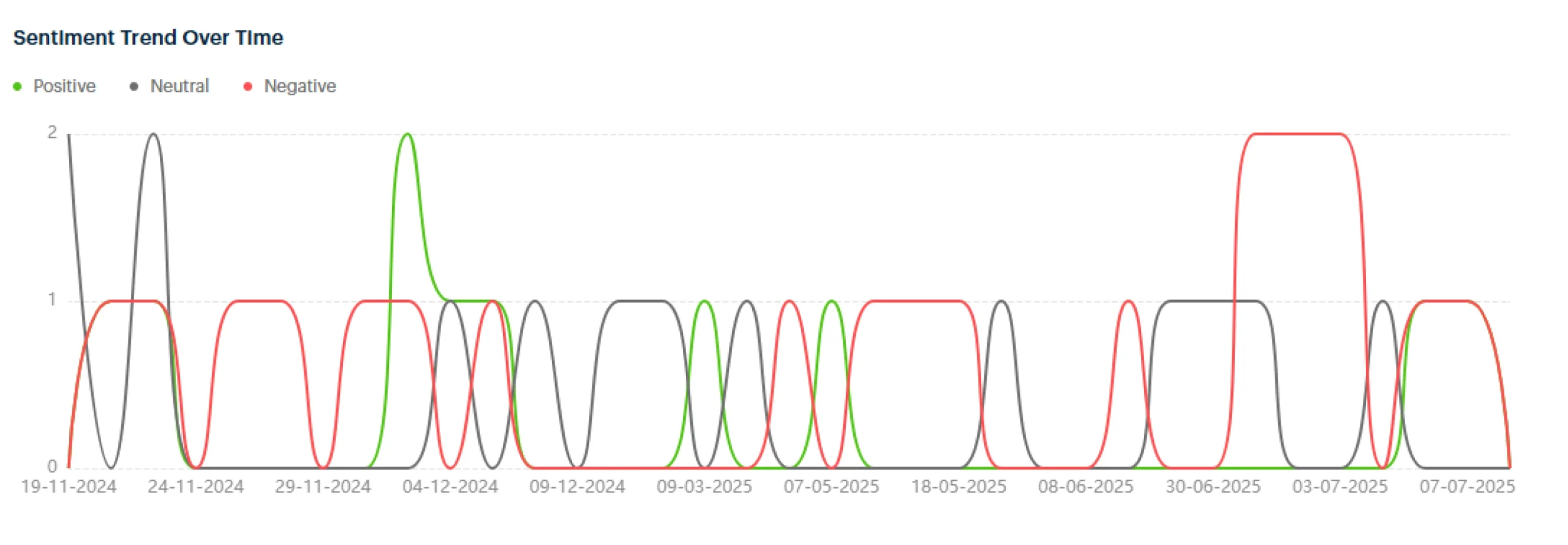
Media Coverage
Jaguar rebrand backlash was not only highlighted on social platforms, but the major news publication sites, such as Forbes, CNBC, The Sun, and The New York Times, also slammed the campaign. A news article published by MSN showed the response of influential media entities, mainly ridiculing the campaign’s visuals and messaging.
Loss of Sales
When a brand campaign fails to make a positive impact on the audience, it ultimately leads to a negative economic impact. Jaguar faced huge loss of upto 97.5% in sales due to rebranding failure.
April 2025 was marked as one of the lowest sales periods for Jaguar, as only 49 vehicles were registered across Europe. Many analysts argued that apart from the halted combustion engine production, the brand perception was a major contributor to the drop in sales.
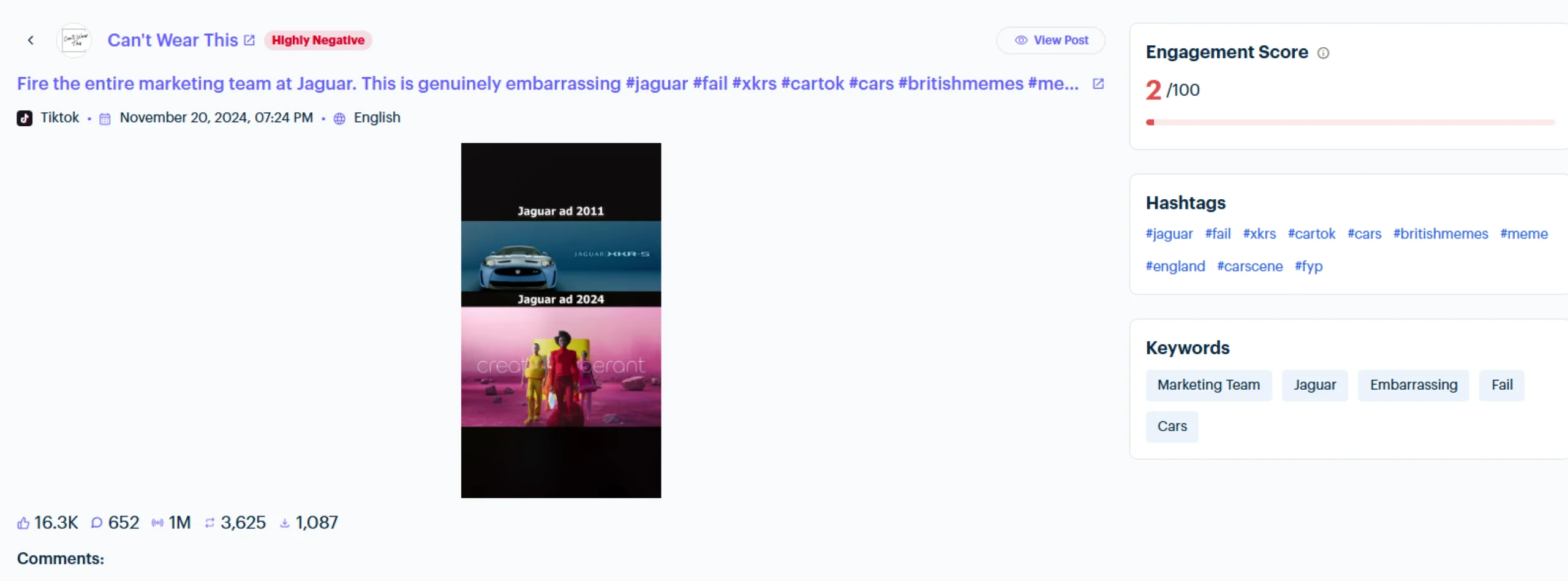
Platform Insights on Jaguar Rebranding
The cross-platform sentiment analysis reveals that a negative public sentiment dominated the social media and news platforms, with News, Reddit, Twitter, and YouTube showing the sharpest disapproval of the campaign.
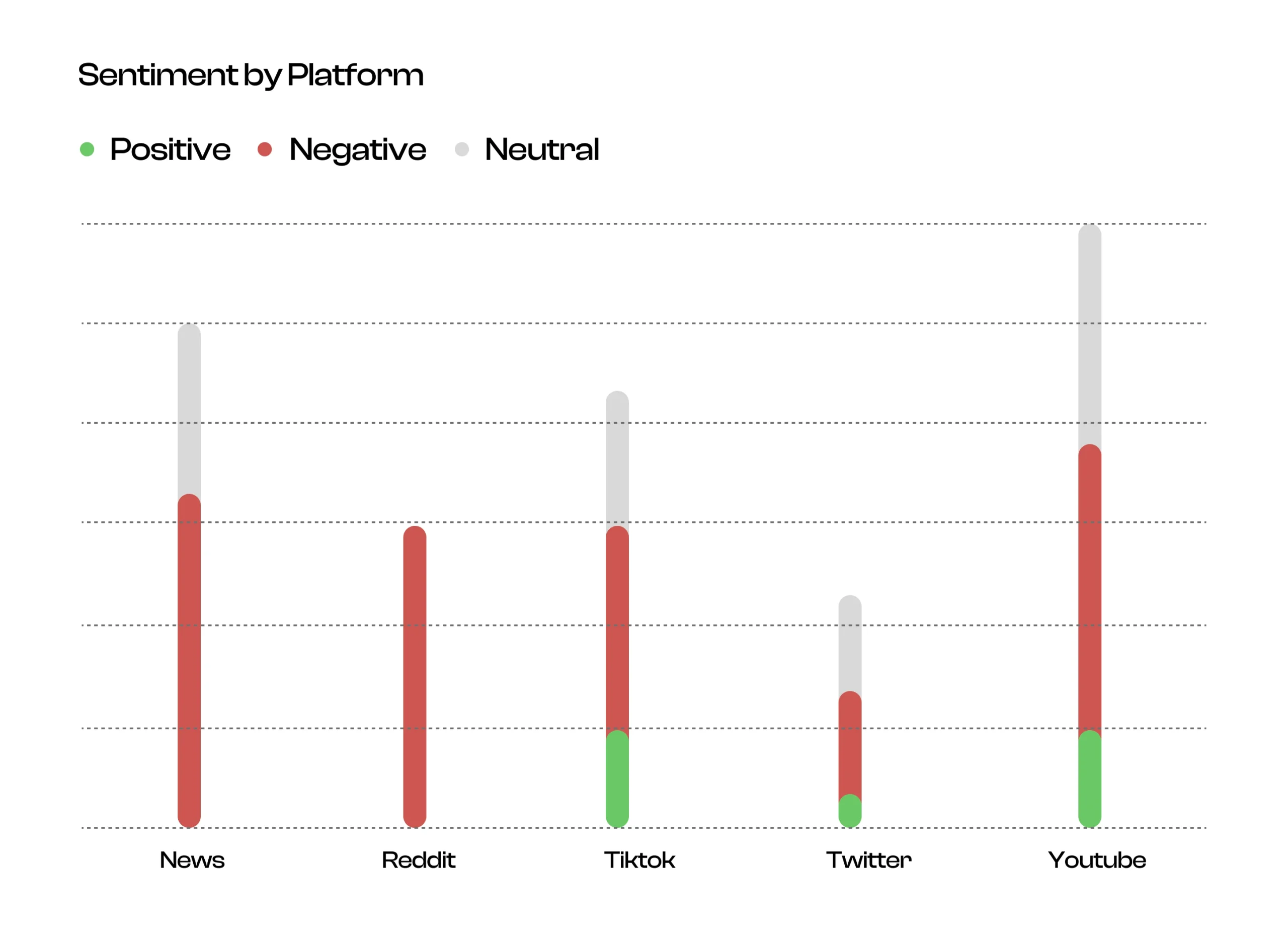
These insights highlight the importance of not monitoring public sentiments and opinions prior to strategizing business campaigns. This leads to the following question:
Could this rebranding process have been streamlined if users’ emotional response were tracked across various social platforms, such as Reddit, Facebook, Twitter, and YouTube?
The answer to this question is simply prioritizing social listening during such hardcore rebranding or strategic changes. Social listening and cross-platform sentiment analysis serve a crucial role in examining the dominating audience narratives regarding a particular case or event.
What Went Wrong and How The Rebranding Could’ve Been Successful?
One of the major aspects that led to Jaguar’s rebranding failure was the lack of knowledge about the public’s sentiments towards a brand. The leaper wasn’t just a logo but was the brand’s major emotional anchor. Its removal signaled an emotional alienation for the loyal fans.
Additionally, Jaguar’s PR team decided to remain silent in the face of the growing backlash, as they were not prepared for an adaptive crisis response.
By analyzing audience sentiment before launch, especially during times of crisis or rebranding backlash, brands can adjust their messaging, visuals, and overall campaign direction to better align with public expectations.
The real-time media alerts and social listening empower sales executives to capture the required signals related to the relevant industries and prospects across all social platforms. ‘
Had Jaguar acquired an automated sentiment analysis service and a comprehensive narrative monitoring strategy, it could’ve modified the design and messaging accordingly and responded to the backlash in a much more polished way.
Read the Room With Media Watcher Before Redesigning Your Brand
In the chase of deleting the ordinary, Jaguar unintentionally deleted the trust among its audience due to the non-reliance on media monitoring services. Without the proper understanding of audiences’ requirements and sentiments, rebranding is never effective.
Media Watcher offers a detailed overview of the evolving sentiments, pain points, and trends across social platforms and other news channels in real-time. It future-proofs the brands through the following services:
- Media Watcher’s instant media alerts help brands spot potential industrial opportunities and emerging interests before competitors.
- It assists brands in examining the sentiment trends over time and across different regions. This not only provides a detailed overview of audience perception, but also serves as a crucial point in managing the crisis as well.
- Media Watcher’s real-time media intelligence solutions strengthen market research by delivering customized insights based on region, media source, or language. With such precision, Media Watcher becomes the perfect market research tool for brands aiming to align their campaigns with audience sentiment.
Contact us or visit the Media Watcher website for a free demo!
FAQs:
Q1) When did Jaguar rebrand?
Jaguar undertook the rebranding in late 2024, signaling a bold shift toward a fully electric and ultra-luxury future. The campaign aimed to redefine its identity with modern visuals and abstract messaging.
Q2) Who did the Jaguar rebrand?
The rebrand was executed by Accenture Song, a global creative consultancy, which Jaguar enlisted to craft its new design, tone, and brand strategy.

